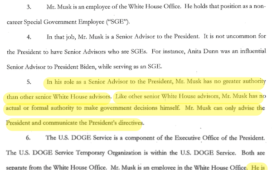We are once again in a situation where the information about the conflict between the Resistance and Israel is polluted by propaganda, important omissions as well some observers getting ahead of themselves. Even with Iran missile strikes into Iran having occurred yesterday, the reporting is still sketchy, admittedly in no small measure due to Israel’s attempt to impose a blackout.
However, some things do appear to be known:
Israel air defenses again failed. This is a bigger re-run of what happened in April, when Iran agreed to what Israel and its allies thought would be Potemkin retaliation for Israel striking the Iran embassy compound in Damascus. Even with Israel having ideal circumstances, targets agreed in advance, having support from the US, UK and France, Iran sending slow-moving drones with a six hour flight time first and even broadcasting the launch on state TV, Iran hit every target with great accuracy. And the cost of the strikes was $90 million-ish for Iran, while the defense cost for Israel was IIRC $1.35 billion, and another $1 billion for Israel’s allies.1
Iran fired 200 to 400 missiles. The Navy said it downed only about a dozen missiles.2 We had this tweet in Links but it’s worth highlighting:
🇮🇱🇮🇷 15 minutes Iranian missiles hitting Israel … supercut pic.twitter.com/OABH2cWfb4
— Lord Bebo (@MyLordBebo) October 1, 2024
The level of damage is not clear and in any event, Iran may have been more interested in a show of force. Pathologically, pro-Israel sources are treating the lack of any deaths as proof that Iran was still showing restraint and trying to avoid casualties. Iran reportedly hit three airbases, Nevidim, Telnov, and Hatserim, and also struck close to the Mossad Unit 8200 building. There were also unconfirmed videos on Twitter showing missiles striking Israel offshore gas operations, which provide 80% of Israel’s gas, and an oil tankers.
Iran claimed to have taken out 20 of Israel’s squadron of 35 F-35s, stationed at Nevatim. However, Simplicius claims this is inaccurate and that Iran gave Israel warning. This seems inconsistent with other accounts that the Iranian ballistic missiles showed up so quickly that Israel did not sound air alerts in advance. Nevertheless:
In truth, Iran openly admitted notifying the US—and thereby Israel—of the strikes in advance, which gave Israel forewarning to take all their F-35s to the sky. This is standard procedure for high value assets like that before any strike, regularly carried out by both Ukraine and Russia in the SMO.
This seems inconsistent with occasional triumphalist accounts from the Ukraine and Russia side of having taken out high-value fighter jets and now Russia systematically hunting for and destroying F-16s. Reader sanity checks welcome.
However, the Iranian statement after the attack indicated that they intended it as a retaliation, so breaking too much china in Israel would be inconsistent.
Islamic Revolutionary Guard Corps (IRGC): We are striking military targets with dozens of rockets in the occupied Palestinian territories.
IRGC: In response to the martyrdom of Ismail Haniyeh, Sayyed Hassan Nasrallah, and martyr Neilvorushan, we have targeted the heart of the… pic.twitter.com/IAfgwPGrbJ
— vanessa beeley/UK Column (@VanessaBeeley) October 1, 2024
In other words, a lot of what looked like near misses or hits on low-value sections of generally high value facilities may have been by design.
One should also not discount the effect on Israel citizens of seeing so many missiles land unimpeded.
The US and Israel are now in quite a mess. Netanyahu and the US, to preserve their senses of manhood, need to respond. But it may finally be dawning on Netanyahu that the US cannot save Israel from Iran in a full-on war, even though the US and its allies could probably mark up Iran a lot. The man on the right is the head of Mossad.

Now Israel could use nukes on Iran, but Iran is widely believed to have a massive dead hand counter-attack capability that would not only flatten Israel but also torch Saudi oilfields, turning the Middle East into an ecological disaster zone.
Politico reported that Israel had persuaded the White House to go along with the obviously lunatic idea of attacking Lebanon to coerce it to enter into negotiations. Since Amos Hochstein was part of this scheme, it isn’t hard to imagine, as usual, that he was operating to advance Israel as opposed to US interests. And Netanyahu has been keen to get the US more deeply committed to defending Israel, so any way to get the US to go along with escalation was ducky for him.
Mind you, even though a bigger mess in Israel puts the Democratic party keeping the Presidency at risk (is Madame Joy Vibes a credible war leader?), the White House went ahead over objections from the Pentagon, State and the intel agencies. This should have been plenty of cause for pause; since when has Anthony Blinken refrained from being Israel’s chief enabler?
The US and Israel over-estimated how much damage they had actually done to Hezbollah, despite killing most of its top cadre. It still has an estimated 150,000 missiles. How much in the way of leadership does it take to assign targets and fire? This was a point made by John Mearsheimer in an interview with the Spectator: Hezbollah was obviously not defeated after Israel killed Nasrallah and other top Hezbollah figures because Hezbollah was still firing on Israel. Operationally, nothing important to Israel had changed.
Norman Finkelstein more recently made a similar point: that the claim by Israel that it needed to get Hezbollah to pull back past the Litani River so the settlers in northern Israel could go home was clearly bogus. Hezbollah was firing on them from much further north in Lebanon. The demand was about securing concessions, importantly territorial, from Hezbollah to show Israel had scored a win.
Recall Netanyahu’s bluster at the UN. A key motivation for the meant-to-be decisive pager and leadership attacks was to re-establish the appearance of military primacy, both for Israel’s chops in the region and to restore a sense of security in the Israel population.
“I have a message for the tyrants of Tehran – if you strike us, we will strike you. There is no place in Iran that the long arm of Israel cannot reach. And that’s true of the entire Middle East.”
Speaking at the UN General Assembly today, Israeli leader Benjamin Netanyahu… pic.twitter.com/MgTGIEoekZ
— 5Pillars (@5Pillarsuk) September 27, 2024
However, aside from misreading Iran’s strategic patience as weakness, and likely also refusing to recognize its military prowess, the US and Israel likely also underestimated Shia tenacity, particularly when fighting for their families, their land, and their religion. Alastair Crooke recently recounted how the Shia around 900 AD were the dominant force in the Middle East, and were over time often subjugated to other rulers. Under the Caliphate, Shia were told not to attend their own mosques, with the punishment that they’d lose a finger if they did. `Per Crooke, they kept coming, losing all their fingers, then all their toes, then both hands, then their feet. He added that sacrifice remains a deeply-held value and one that is alien to us.
The Anglosphere press is making less mention of the Iran attack than one would normally expect, and also stressing that it failed by not doing much (admitted) damage. Many commentators read that as intended to persuade Israel not to strike back or to engage in at most a carefully orchestrated response.
Given the well-established propensity of Israel to engage in disproportionate retaliation, intensified by Netanyahu’s maniacal desire to get the US embroiled, it seems vanishingly unlikely that Israel will be measured. Israel is now deploying the “we will respond at a time of our choosing” trope. That could be to placate the US, to pretend that Israel won’t do anything untoward until after the election, when its plans are different.
To turn briefly to Lebanon, the idea of a limited invasion was obviously an oxymoron, yet another too-obvious gambit to ensnare the US. Yet oddly, at least so far, Israel, despite all the noise about launching its ground attack, seems not yet to have gotten out of the staring blocks. In a story today from Arab News:
Hezbollah said that no Israeli troops had crossed over into Lebanon. “All the Zionist claims that (Israeli) occupation forces have entered Lebanon are false claims,” a Hezbollah spokesman said in a statement on Tuesday.
They added there had “not yet been any direct ground clash between (Hezbollah) resistance fighters and (Israeli) occupation forces.”
The UN peacekeeping force in Lebanon also said on Tuesday that there was “no ground incursion” going on in the south of the country. UNIFIL spokesman Andrea Tenenti told AFP news agency there was “no ground incursion right now.”
However, the Aljazeera lead headline as of a few hours ago, which I wish I had screenshot, indicated that Israel had not/not much gotten past the border. That has changed, but this is the only detail:
Battles between Hezbollah fighters and Israeli troops in southern Lebanon intensify, with the Israeli army saying at least eight soldiers have been killed in combat so far.
Jerusalem Post leads with a similar story: IDF announces 7 IDF soldiers killed by Hezbollah during Lebanon ground operation. It describes that they were killed in three separate incidents on Wednesday. So this ground operation does not look to be getting off to a great start.
Twitter does not have any information on the status of the fight at the border. Updates welcome.
_____
1 Scott Ritter explained on Judge Napolitano that this time, Iran used only ballistic missiles. The Iron Dome is not designed to protect against them; it’s for slower-moving Hamas and Hezbollah rockets. The defenses are systems on US naval ships and some ground launchers, such as the Patriots. However, the latter are not in great supply.
2 The claim in the Jerusalem Post was even more modest: “….the Pentagon said that two US Navy destroyers fired about a dozen interceptors against Iranian missiles aimed at Israel.”














